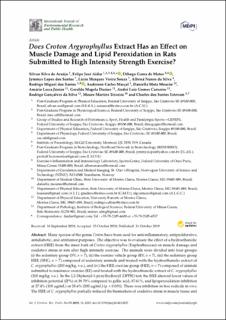| dc.contributor.author | de Araújo, Silvan Silva | |
| dc.contributor.author | Aidar, Felipe José | |
| dc.contributor.author | de Matos, Dihogo Gama | |
| dc.contributor.author | dos Santos, Jymmys Lopes | |
| dc.contributor.author | Souza, Lúcio Marques Vieira | |
| dc.contributor.author | da Silva, Albená Nunes | |
| dc.contributor.author | Miguel dos Santos, Rodrigo | |
| dc.contributor.author | Marçal, Anderson Carlos | |
| dc.contributor.author | Mourão, Daniella Mota | |
| dc.contributor.author | Júnior, Amário Lessa | |
| dc.contributor.author | Durães, Geraldo Magela | |
| dc.contributor.author | Carneiro, André Luiz Gomes | |
| dc.contributor.author | da Silva, Rodrigo Gonçalves | |
| dc.contributor.author | Teixeira, Mauro Martins | |
| dc.contributor.author | Estevam, Charles dos Santos | |
| dc.date.accessioned | 2022-05-02T14:43:17Z | |
| dc.date.available | 2022-05-02T14:43:17Z | |
| dc.date.created | 2020-01-28T19:20:03Z | |
| dc.date.issued | 2019 | |
| dc.identifier.citation | International Journal of Environmental Research and Public Health (IJERPH). 2019, 16:4237 (21), 1-11. | en_US |
| dc.identifier.issn | 1661-7827 | |
| dc.identifier.uri | https://hdl.handle.net/11250/2993711 | |
| dc.description.abstract | Many species of the genus Croton have been used for anti-inflammatory, antiproliferative, antidiabetic, and antitumor purposes. The objective was to evaluate the effect of a hydroethanolic extract (HEE) from the inner bark of Croton argyrophyllus (Euphorbiaceae) on muscle damage and oxidative stress in rats after high intensity exercise. The animals were divided into four groups: (i) the sedentary group (SV; n = 7), (ii) the exercise vehicle group (EV, n = 7), (iii) the sedentary group HEE (SHG; n = 7) composed of sedentary animals and treated with the hydroethanolic extract of C. argyrophyllus (200 mg/kg, v.o.), and (iv) the HEE exercise group (HEE; n = 7) composed of animals submitted to resistance exercise (RE) and treated with the hydroethanolic extract of C. argyrophyllus (200 mg/kg, v.o.). In the 2,2-Diphenyl-1-picrylhydrazyl (DPPH) test, the HEE showed lower values of inhibition potential (IP%) at 39.79% compared to gallic acid, 87.61%, and lipoperoxidation inhibition at 27.4% (100 µg/mL) or 28.6% (200 µg/mL) (p < 0.001). There was inhibition in free radicals in vivo. The HEE of C. argyrophyllus partially reduced the biomarkers of oxidative stress in muscle tissue and muscular damage (creatine kinase (CK) and Lactate Dehydrogenase (LDH)) (p < 0.05) in rats, and in this sense it can be an aid to the recovery process after exhaustive efforts. | en_US |
| dc.language.iso | eng | en_US |
| dc.publisher | MDPI | en_US |
| dc.rights | Navngivelse 4.0 Internasjonal | * |
| dc.rights.uri | http://creativecommons.org/licenses/by/4.0/deed.no | * |
| dc.title | Does croton argyrophyllus extract has an effect on muscle damage and lipid peroxidation in rats submitted to high intensity strength exercise? | en_US |
| dc.title.alternative | Does croton argyrophyllus extract has an effect on muscle damage and lipid peroxidation in rats submitted to high intensity strength exercise? | en_US |
| dc.type | Peer reviewed | en_US |
| dc.type | Journal article | en_US |
| dc.description.version | publishedVersion | en_US |
| dc.source.pagenumber | 1-11 | en_US |
| dc.source.volume | 16:4237 | en_US |
| dc.source.journal | International Journal of Environmental Research and Public Health (IJERPH) | en_US |
| dc.source.issue | 21 | en_US |
| dc.identifier.doi | 10.3390/ijerph16214237 | |
| dc.identifier.cristin | 1784586 | |
| cristin.ispublished | true | |
| cristin.fulltext | original | |
| cristin.qualitycode | 1 | |

